We tend to slip on very smooth surfaces like wet bathroom floors.
Step by step video & image solution for We tend to slip on very smooth surfaces like wet bathroom floors. by Physics experts to help you in doubts & scoring excellent marks in Class 6 exams.
Updated on:21/07/2023Topper's Solved these Questions
- FORCEBOOK - ICSECHAPTER - FORCEEXERCISE - Exercises (Section II)
3 Videos
- FORCEBOOK - ICSECHAPTER - FORCEEXERCISE - Exercises (Section II) Distinguish between the following
2 Videos
- FORCEBOOK - ICSECHAPTER - FORCEEXERCISE - Exercises (Section I) Complete the table
1 Videos
- ENERGY BOOK - ICSECHAPTER - ENERGY EXERCISE - Picture Based Questions
9 Videos
- LIGHTBOOK - ICSECHAPTER - LIGHTEXERCISE - Picture Based Questions
21 Videos
Similar Questions
A uniform thin rod of mass m and length l is standing on a smooth horizontal suface. A slight disturbance causes the lower end to slip on the smooth surface and the rod starts falling. Find the velocity of centre of mass of the rod at the instant when it makes an angle θ with horizontal.
View SolutionA uniform rod of mass M and length L is standing vertically along the y-axis on a smooth horizontal surface as shown. A small disturbance causes the lower end to slip on the smooth horizontal surface and rod starts falling. The path followed by centre of mass of the rod during the fall is
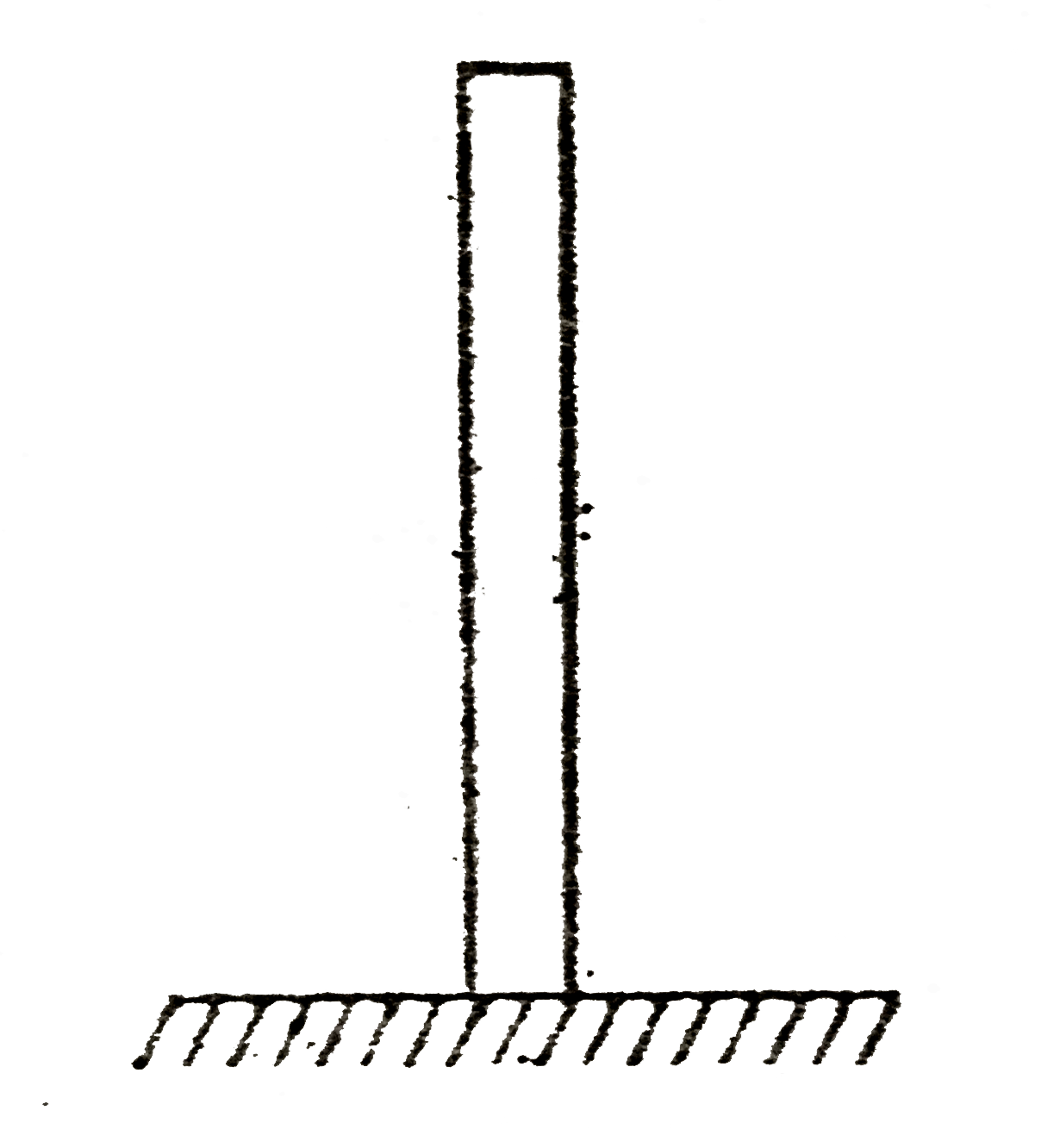
View SolutionA uniform thin rod of mass m and length L is standing vertically along the y-axis on a smooth horizontal surface, with its lower end at the origin (0,0). A slight disturbane at t = 0 causes the lower end t slip on the smooth surface along the positive x-axis, and the rod starts falling.
(i) What is the path followed by the centr of mass of the rod during its fall?
(ii) Find the equaiton to the trajectory of a point on the rod shape of the path of this point?
View SolutionIf we imagine two ideally smooth surfaces & if they are kept in contact, the frictional force acting between them is,
View SolutionIn the figure shown, there is friction between the blocks P and Q but the constact between the block Q and lower surface is frictionless. Initially the block Q with block P over it lies at x = 0, with spring at its natural length. The block Q is pulled to right and then released. As the spring -blocks system undergoes SHM with amplitude A, the block P tends to slip over Q, P is more likely to slip at
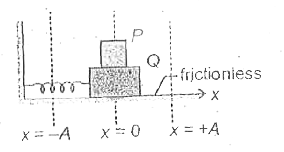
View SolutionA cart of mass M is tied to one end of a massless rope of length 10m. The other end of the rope is in the hands of a man of mass M2. The entire ststem is on a smooth horizontal surface. If the man pulls the cart by the rope then find the distance by which the man will slip on the horizontal surface before the man and the cart will meet each other.
View SolutionA chain of length l<πR2 is placed on a smooth surface whose some part is horizontal and some part is on quarter circular of radius R in the vertical plane as shown. Initially the whole part of chain lies in the circular part with one end at topmost point of circular surface. If the mass of chain is m, then work required to pull very slowly the whole chain on horizontal part is -
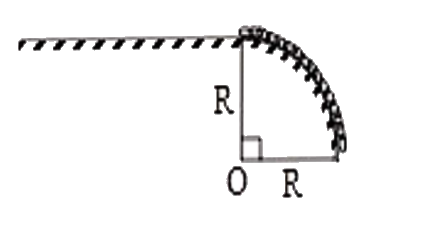
View SolutionA plank of mass M, is placed on a smooth surface over which a cylinder of mass m(=M) annd radius R=1m is placed as shown in figure. Now the plane is pulled towards the right wilth an external force F(=2Mg). If the cyinder does not slip over the surfcace of the plank, find the linear acceleration of he plank and the cylinder and the angular acceleration of the cylinder. (Take g=10ms2)

View SolutionA disc of circumference s is at rest at a point A on a horizontal surface when a constant horizontal force begins to act on its centre. Between A and B there is sufficient friction toprevent slipping, and the surface is smooth to the right of B.AB=s. The disc moves from A to B in time T. To the right of B,
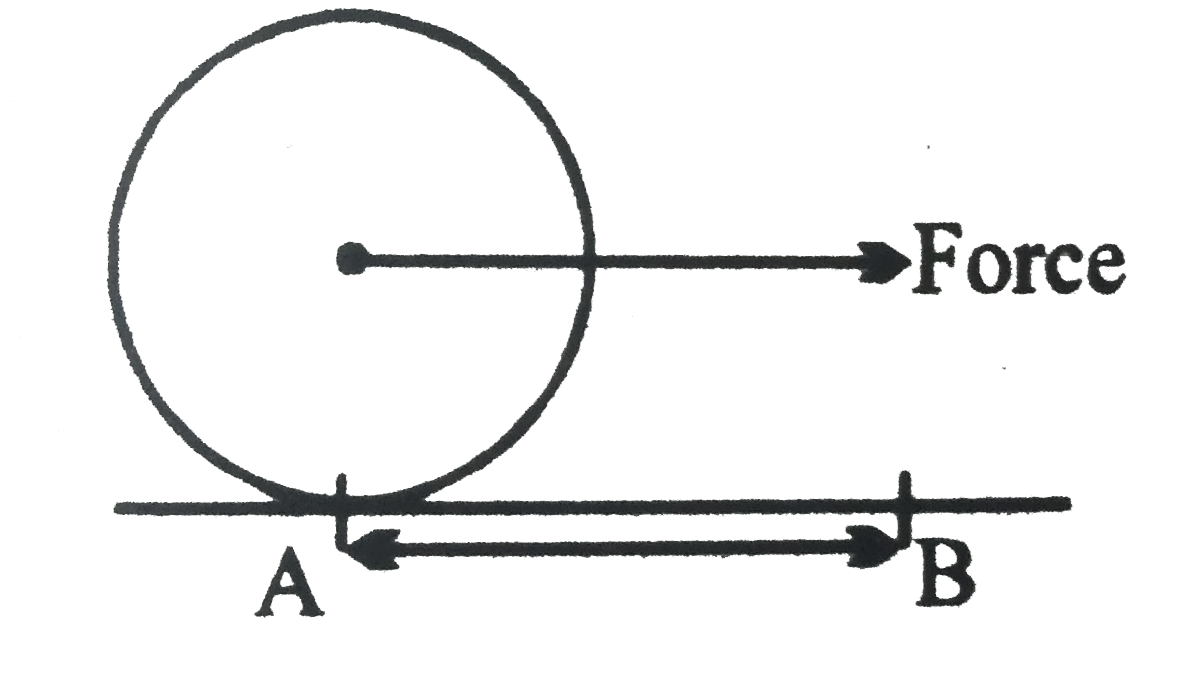 .
.
View SolutionA trolley of initial mass m0 is kept over a smooth surface as shown in figure. A constant force F is applied on it. Sand kept inside the trolley drains out from its floor at a constant rate of (μ)kg/s. After time t find:
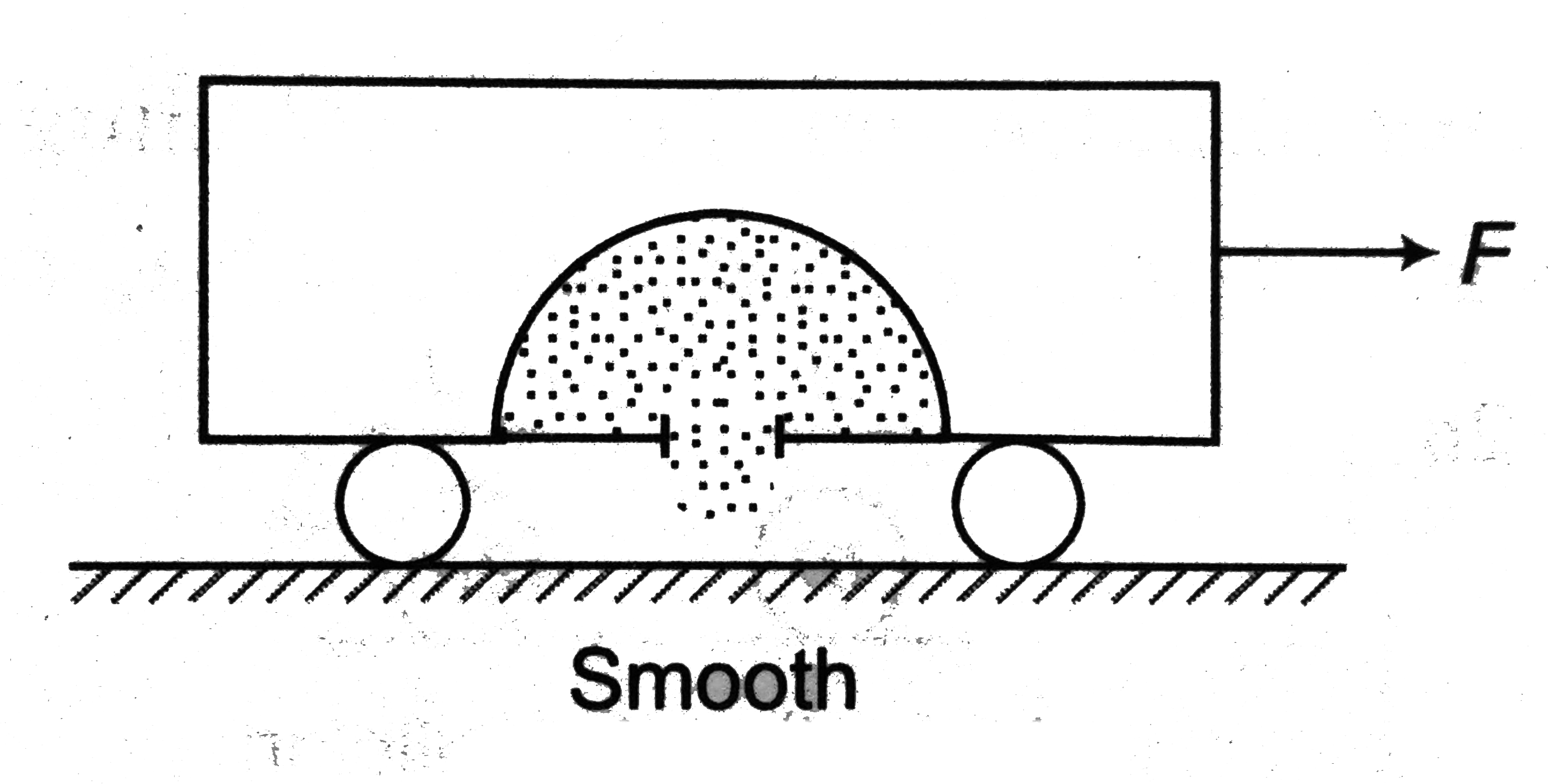
(a) total mass of trolley and sand.
(b) net force on the trolley.
(c) velocity of trolley.
View Solution
